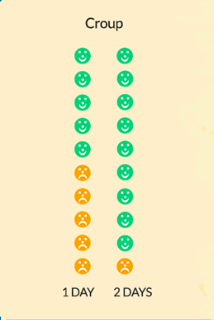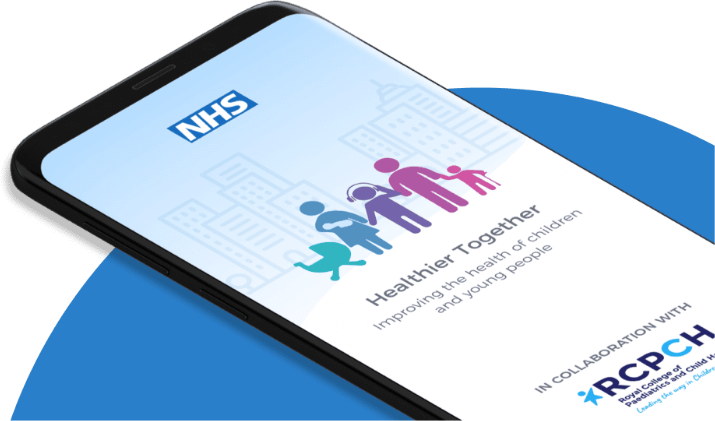Croup
Croup is a common childhood illness that causes a bark like cough. It can also cause difficulty breathing which can be frightening for both you and your child.
Croup is caused by a virus which affects the airways including the voice box (larynx), windpipe (trachea) and lungs (the bronchi) causing them to swell and become narrower.
Some children have croup two or more times in their childhood.
Related topics: bronchiolitis, cough and colds, difficulty breathing
When should you worry?
If your child has any of the following:
-
Breathing very fast or breathing that stops or pauses
-
Working hard to breathe, drawing in of the muscles below the rib or unable to talk
- A harsh noise as they breathe in (stridor) present all of the time (even when they are not upset)
-
Drooling more than normal and struggling to swallow their own spit
-
Becomes pale, blue, mottled and/or unusually cold to touch
-
Difficult to wake up, very sleepy or confused
-
Weak, high-pitched, continuous cry or can’t be settled
-
Has a fit (seizure)
-
Is under 3 months old with temperature more than 38°C or under 36°C (unless fever in the 48 hours following vaccinations and no other red or amber features)
-
Has a rash that does not go away with pressure (the ‘Glass Test’)
You need urgent help
Go to the nearest Hospital Emergency (A&E) Department or phone 999
If your child has any of the following:
- Breathing a bit faster than normal or working a bit harder to breathe
- A harsh noise as they breathe in (stridor) present only when upset
-
Dry skin, lips or tongue
-
Not had a wee or wet nappy in last 8 hours
-
Poor feeding in babies (less than half of their usual amount)
-
Irritable (Unable to settle them with toys, TV, food or hugs even after their fever has come down)
-
Is 3-6 months old with temperature 39oC or above (unless fever in the 48 hours following vaccinations and no other red or amber features)
-
Temperature of 38oC36 or above for more than 5 days or shivering with fever (rigors)
-
Temperature less than 36°C in those over 3 months
-
Getting worse or you are worried about them
You need to contact a doctor or nurse today
Please call your GP surgery or contact NHS 111 - Go to 111.nhs.uk or call 111.(111 online does not currently take questions about children aged under 5, so if your child is 4 or younger, please call 111).
If symptoms persist for 4 hours or more and you have not been able to speak to either a member of staff from your GP practice or to NHS 111 staff, recheck that your child has not developed any red features.
If none of above features are present:
-
Watch them closely for any change and look out for any red or amber symptoms
-
Additional advice is also available for families for help cope with crying in otherwise well babies
-
If your child has a long term condition or disability and you are worried please contact your regular team or follow any plans that they have given you.
Continue providing your child’s care at home. If you are still concerned about your child, call NHS 111 – dial 111
Self care
Continue providing your child’s care at home. If you are still concerned about your child, speak to your health visitor, local pharmacist or call NHS 111– dial 111
Children and young people who are unwell and have a high temperature should stay at home. They can go back to school, college or childcare when they no longer have a high temperature, and they are well enough to attend.
What are the symptoms of croup?
-
A cough. The cough is usually harsh and barking. This ‘croupy cough’ is due to inflammation and swelling of the vocal cords in the voice box (larynx)
-
Noisy breathing. The infection can narrow the voice box (larynx) and windpipe (trachea) and cause an extra noise called a stridor. This noise is normally heard on breathing in
-
Breathing may become difficult if the narrowing becomes worse
-
Your child may also have a runny nose, hoarse voice, sore throat, high temperature (fever), general aches and pains and be off their food. Croup may follow a cold but can also appear without any earlier illness
-
The symptoms of croup appear worse at night. A mild but irritating cough may persist for a further week or so
How can I help my child?
-
Stay calm. This will help keep your child calm. Children with croup may become upset. Crying may make their symptoms worse
-
Sit your child upright on your lap if their breathing is noisy or difficult. Let them find the most comfortable position
-
Encourage your child to drink cool drinks regularly (little and often) to help soothe their throat and keep them hydrated
-
If your child seems to be in pain or discomfort, you can give your child paracetamol or ibuprofen, following the instructions on the container
-
If their temperature is high, dress them in cool, loose clothes (if any) and don’t use anything warmer than a sheet to cover them in bed
-
Stay with your child or check him or her regularly. You need to know if the symptoms are getting worse
-
Some people find that taking their child outside in the cool, fresh air helps to relieve their symptoms
-
There is no evidence that steam inhalation helps. There is a risk of scalds if steam is used
-
Do not give cough syrup. It is not recommended for children under 6 years. It can make children sleepy and does not help croup
How is croup treated:
-
Your child may be given a steroid medicine called dexamethasone or prednisolone which can reduce airway swelling
-
As croup is caused by a viral illness antibiotics are not needed
How long will your child’s symptoms last?
The chart below shows how long croup lasts in children. The faces represent 10 children who have croup. Green faces are those children who have recovered within that time period:

The diagram above is taken from www.whenshouldiworry.com
Where should you seek help?
- If it is non-urgent, speak to your local pharmacist or health visitor
- If your child has any of the above features, urgently see your GP. For an urgent out-of-hours GP appointment, call NHS 111
- You should only call 999 or go to your nearest Emergency Department (A&E) in critical or life threatening situations
For wear and tear, minor trips and everything in between
Self-care
You can treat your child's very minor illnesses and injuries at home.
Some illnesses can be treated in your own home with support and advice from the services listed when required, using the recommended medicines and getting plenty of rest.
Sound advice
Children can recover from illness quickly but also can become more poorly quickly; it is important to seek further advice if a child's condition gets worse.
For information on common childhood illnesses go to What is wrong with my child?
Pharmacists are experts in many aspects of healthcare and can offer advice on a wide range of long-term conditions and common illnesses such as coughs, colds and stomach upsets. You don’t need an appointment and many have private consultation areas, so they are a good first port of call. Your pharmacist will say if you need further medical attention.
Sound advice
- Visit a pharmacy if your child is ill, but does not need to see a GP
- Remember that if your child's condition gets worse, you should seek further medical advice immediately
- Help your child to understand - watch this video with them about going to the pharmacy
For information on common childhood illnesses go to What is wrong with my child?
The 0-19 Service for children and young people is delivered by Oxford Health NHS Foundation Trust and offers a single point of access for Health Visiting, School Nursing and the Family Nurse Partnership. You can contact the teams using the details below:
Single Point of Access (SPA): 01865 903 800
Email: cyp0-19@oxfordhealth.nhs.uk
Chat Health Parentline
Text us any time for confidential advice and support and you will have a response the next working day (Monday-Friday exluding Bank Holidays).
Parents and carers for children aged 0-4: Text 07312 263 081
Parents and carers of children aged 5-11: Text 07312 263 227
Young people aged 11-19 and their parents and carers: Text 07312 263 08
Health Visitors
Health visitors are registered nurses or midwives who have additional training in community public health nursing. They provide a universal service, targeted to individual needs for children aged 0-5 years. Learn more about the Oxfordshire Health Visiting Service here!
School and college Health Nurses
School Health Nurses are specialist public health nurses and have offices across Oxfordshire. They work very closely with Health Visitors to support school aged children. They are available for young people to access in secondary schools and colleges, and offer a service to children who are home educated. They work closely with children, young people and their families to support and promote health and wellbeing. Learn more about the Oxfordshire School and college Health Nursing Service here!
Family Nurse Partnership
The Family Nurse Partnership service supports parents who are aged 19 years or under at conception, or under 21 years if they have been in care. The Family Nurse works alongside younger parents in their home, offering health, wellbeing and development support and information from the early stages of pregnancy, usually up until your child is two. Learn more about the Family Nurse Partnership service here!
GPs assess, treat and manage a whole range of health problems. They also provide health education, give vaccinations and carry out simple surgical procedures. Your GP will arrange a referral to a hospital specialist should you need it.
Sound advice
You have a choice of service:
- Doctors or GPs can treat many illnesses that do not warrant a visit to A&E
- Help your child to understand – watch this video with them about visiting the GP or going to a walk in centre
For information on common childhood illnesses go to What is wrong with my child?
If you’re not sure which NHS service you need, you can call 111 or use 111 online.
Please note that 111 online is for people aged 5 and over. Call 111 if you need help for a child under 5.
An adviser will ask you questions to assess your symptoms and then give you the advice you need, or direct you straightaway to the best service for you in your area.
Sound advice
Use NHS 111 if you are unsure what to do next, have any questions about a condition or treatment or require information about local health services
For information on common childhood illnesses go to What is wrong with my child?
Emergency Departments (A&E) provide vital care for life-threatening emergencies, such as loss of consciousness, suspected heart attacks, breathing difficulties, or severe bleeding that cannot be stopped. If you’re not sure it’s an emergency, call 111 for advice.





